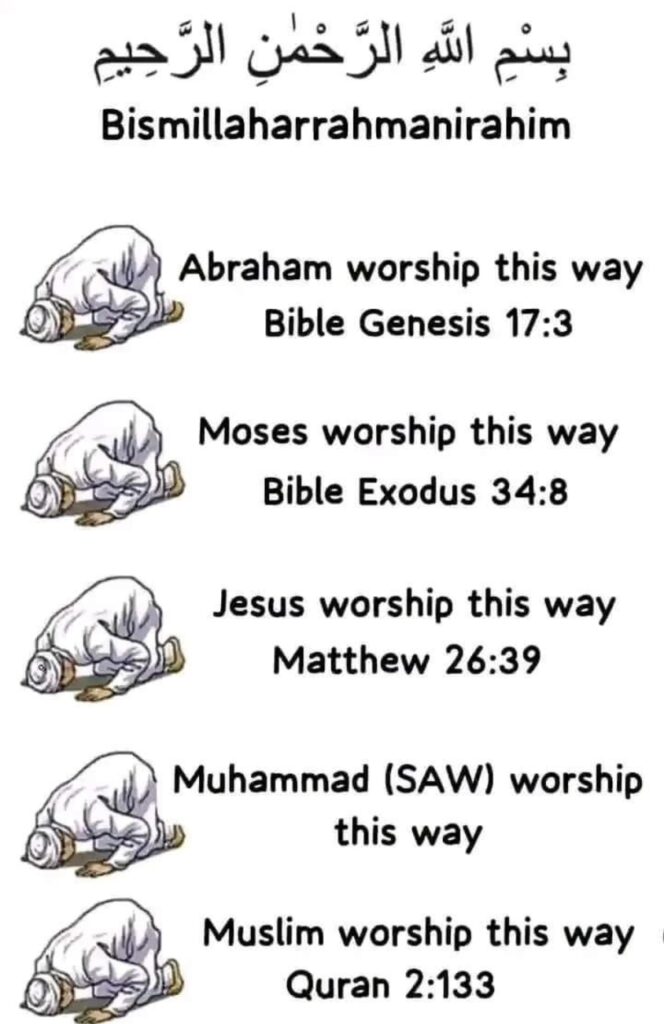In Islam, prostration in prayer, known as “sujood” in Arabic, is a fundamental part of the act of worship. It symbolizes the submission and humility of the worshipper before Allah (i.e. God). Muslims acknowledge prostration as a physical expression of their devotion and obedience to Allah, and it is an essential component of the daily prayers (salah) performed by Muslims.

In the Islamic tradition, the act of prostration is deeply rooted in the Quran and the teachings of Prophet Muhammad (peace be upon him). The Quran mentions prostration as a form of worship and obedience to God in several verses. For example, in Surah Al-Hajj (22:77), it is stated, “Oh you who have believed, bow and prostrate and worship your Lord and do good – that you may succeed.” Additionally, there are numerous references throughout the Quran emphasizing the importance of prostration as an integral part of prayer.
In Christianity, prostration is not as common as it is in Islam. However, there are instances in the Bible where prostration or kneeling is mentioned as a form of worship and reverence. For example, in the New Testament, the act of kneeling in prayer is described in several passages, such as in the book of Acts (Acts 9:40) and the book of Ephesians (Ephesians 3:14). Matthew 26:39 states, “And he went a little farther, and fell on his face, and prayed, saying, Oh my Father, if it be possible, let this cup pass from me…”
In the Jewish tradition, prostration is also mentioned in the Hebrew Bible (the Old Testament). In the Old Testament, there are instances where individuals prostrate themselves before God as an act of reverence and worship. For example, in the book of Genesis, Joseph’s brothers prostrate themselves before him (Genesis 42:6), and in the book of Exodus, Moses and Aaron prostrate themselves before God (Exodus 34:8). Genesis 17:3 states, “And Abram fell on his face: and God talked with him, saying, As for me, behold, my covenant is with thee…” and Exodus 34:8 states, “Moses bowed to the ground at once and worshiped. “Lord,” he said, “if I have found favor in your eyes, then let the Lord go with us.”
While prostration is not a central part of regular Christian or Jewish worship practices in the same way it is in Islam, the act of prostration as a sign of reverence and submission to God can be found in the scriptures of both faiths.
With this said, why haven’t they maintained prostration as a common practice? I suppose it’s important to recognize that religious practices and interpretations may vary among different denominations and sects within Christianity and Judaism, and the significance of prostration may differ accordingly.
